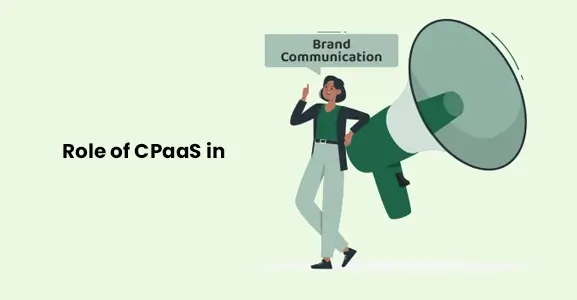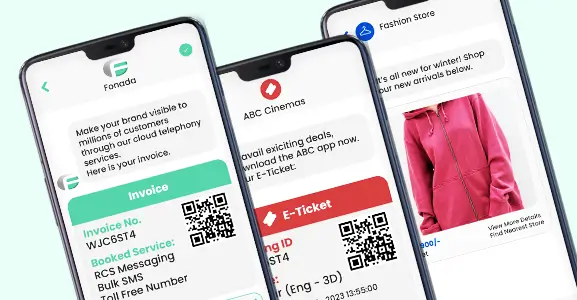An inbound call center, also referred to as an inbound contact center, assists businesses in providing communication support to all their customers who wish to connect regarding their queries and issues related to products or services. These cloud contact centers ensure customers’ queries are treated with higher priorities and contribute to greater customer satisfaction. In simple terms, call center services serve as central points where individuals reach out to a company or organization for assistance or information.
Picture this: your Wi-Fi abruptly stops working, prompting you to contact your internet service provider. When you dial their customer service number, you connect with a representative at their inbound call center. These professionals are dedicated to helping you resolve issues or address inquiries, such as troubleshooting your internet connection or clarifying billing concerns. It’s the focal point for customers seeking help or information, where their calls are received and attended for instant query resolution.
How Does An Inbound Call Center Work?
Inbound call centers operate through a fundamental process where incoming customer calls are directed to a suitable agent or team. Upon receiving a customer’s call, the cloud call center software efficiently routes it to the most relevant agent. Subsequently, the inbound call center staff addresses the caller’s needs, striving to provide optimal solutions.
These centers rely on streamlined call handling methods: when customers reach out with their queries or concerns, advanced call center software promptly directs their calls to the most appropriate agents. Staff members then engage with callers to assist them effectively. Inbound call centers leverage sophisticated software and tools, such as CRM systems, call routing software, and analytical reporting tools, enabling them to efficiently manage high call volumes.
Inbound Vs. Outbound Call Centers- Prime Difference
let’s break down the difference between inbound and outbound call centers in simpler terms with real-life examples:
Imagine you’re calling a company’s support line because you have a problem with a product you bought. That’s an inbound call center. They handle incoming calls from people like you who need help or have questions.
Now, picture this: You receive a call from a company trying to sell you a new internet package. That’s an outbound call center. They make calls to reach out to potential customers like you to promote their products or services.
Key Differences- Inbound Vs Outbound
Inbound is like a customer service hotline, handling calls from people seeking help or information.
Example: Calling your phone company’s support line to fix a network issue.
Outbound is more like sales calls, where they call you to offer products or services.
Example: Getting a call from a credit card company promoting a new card.
Some more differences:
- Inbound call center services are linked to a company’s customer service team, while outbound centers are usually part of the sales department.
- Inbound centers use tools like VoIP to manage calls, while outbound centers often use predictive dialers to make calls efficiently.
- Inbound centers aim for customer satisfaction, while outbound centers focus on selling products or services.
Some call centers can efficiently handle both inbound and outbound calls. These are called omni channel or multichannel call centers because they deal with both incoming customer queries and outgoing sales calls.
Inbound Call Centers- Features
Inbound call center services serve as the primary contact point for customers seeking assistance, information, or support from a company. They are designed to handle incoming calls, emails, chats, and other communication channels initiated by customers.
Several key features define the effectiveness and functionality of inbound call centers:
- Multichannel Support: Modern inbound call centers are equipped to handle communication channels, such as phone calls, emails, live chat, social media messages, and more. This multichannel approach ensures that customers can engage through their preferred mode of communication.
- Interactive Voice Response (IVR): IVR systems allow for automated interaction with callers, enabling them to navigate through menus to reach the appropriate department or service without human intervention. It streamlines the process and directs calls efficiently, reducing wait times.
- Call Queuing and Routing: Inbound call centers manage call volumes effectively by queuing incoming calls and routing them to available agents based on skills, priority, or previous interaction history. This optimizes resource allocation and enhances customer service.
- CRM Integration: Integration with CRM provides agents with instant access to customer information, purchase history, preferences, and previous interactions.
- Analytics and Reporting: Robust analytics tools capture data on call volumes, wait times, resolution rates, and customer satisfaction metrics. Analyzing this data helps optimize operations, identify trends, and improve service quality.
- Quality Monitoring and Training: Call centers employ quality monitoring tools to assess agent performance, identify areas for improvement, and provide targeted training. Continuous coaching ensures that agents deliver consistent and high-quality service.
- Scalability and Flexibility: Inbound call centers are designed to scale operations based on demand fluctuations. They should be adaptable to accommodate seasonal peaks or sudden increases in call volumes.
- Customer Feedback Mechanisms: Gathering and analyzing customer feedback through post-call surveys or other means is crucial for understanding satisfaction levels and identifying areas for enhancement.
Inbound call center services, when equipped with these features, provide efficient customer support and serve as a strategic asset for companies to improve customer satisfaction, loyalty, and overall operational efficiency.
Why Do Your Businesses Need An Inbound Call Center?
Remember the days of waiting on hold forever just to reach a grumpy customer service rep who couldn’t answer your questions? In today’s world, that’s a recipe for disaster. Customers expect quick, friendly, and helpful service – and if you can’t deliver, they’ll take their business elsewhere.
This is where inbound call centers come in. They’re not just for big corporations anymore. Even small and medium-sized businesses can have benefits from maintaining a team for handling their customer calls.
Here are just a few reasons to choose inbound call center:
1. Happy Customers, Happy Business: Think of your call center as your frontline for building relationships with customers. Friendly and knowledgeable agents can answer questions, solve problems, and even offer helpful advice. This personalized touch goes a long way in making customers feel valued and appreciated. And guess what? Happy customers always give preferences to your business and recommend your business to others.
2. More Than Just Phones: Customers expect to connect with you on their terms. That means offering omnichannel support, where they can reach you by phone, email, live chat, or even social media, plays a crucial role in strengthening your bond with customers. An efficient call center platform can handle all these channels seamlessly, providing your customers with a smooth and consistent experience.
3. Boost Your Efficiency: Running a small business is tough. You’re constantly juggling a million tasks, and the last thing you need is to be bogged down by customer calls. With an inbound call center, you can minimize the stress of handling customers’ calls and free your resources for more important tasks without hindering efficiency.
4. Handle the Growth Spurt: Every business owner dreams of seeing their company grow. But with that growth comes an increase in customer calls. A dedicated call center can handle that influx, ensuring that no call goes unanswered and every customer gets the attention they deserve.
So, is an inbound call center right for your small business? The answer is a resounding yes! It’s an investment that will pay off in spades, with happier customers, a more efficient operation, and the peace of mind that comes from knowing your business is in good hands.
Things to be considered while choosing an inbound call center
Choosing the right inbound call center solution involves a detailed understanding of your business requirements and aligning them with the capabilities and features offered by various solutions in the market.
Here’s A Step-By-Step Guide To Help You Make A Well-Informed Decision:
- Assess Your Business Needs: Start by evaluating your call center’s specific needs. Determine the volume of incoming calls, the nature of inquiries, and your services or support. Understand if you need additional features like call routing, IVR (Interactive Voice Response), call recording, CRM integration, or multi-channel support.
- Scalability: Consider your business’s growth trajectory. Ensure that the chosen solution can handle potential increases in call volume and adapt to your evolving needs without causing disruptions.
- Feature Analysis: Make a checklist of essential features and functionalities your call center requires. Look for solutions that offer these features or a customizable option that fits your needs.
- Usability and User Experience: User-friendliness matters. Choose a solution that is intuitive for both agents and administrators. Complex systems might require extensive training and could reduce overall productivity.
- Integration Capability: Make sure your existing system supports integration with new CRM and helpdesk software. This integration facilitates smoother data flow and enhances overall efficiency.
- Quality Monitoring and Reporting: A good call center solution should provide tools for monitoring call quality, generating reports, and analyzing performance metrics. These insights help in improving customer service and operational efficiency.
- Cost Consideration and Flexibility: Evaluate the pricing model offered by different solutions. Check if it aligns with your budget and offers scalability without compromising quality.
- Customer Support and Training: Assess the level of customer support provided by the solution provider. Also, inquire about available training resources for your team to ensure a smooth onboarding process.
- Security and Compliance: The inbound call solution should comply with industry standards and regulations regarding data security and privacy. This is crucial to protect sensitive customer information.
- Trial and Feedback: Whenever possible, opt for a trial period. This allows hands-on experience to understand if the solution meets your requirements. Gather feedback from users during this trial period.
- Reviews and Recommendations: Seek recommendations from industry peers or experts to gain insights into real-world experiences and check users’ reviews before selecting a service.
- Future-readiness: Consider future trends and technological advancements in call center solutions. Assess if the solution aligns with emerging technologies that could benefit your operations in the long run.
By following these steps and carefully considering your business needs choose an inbound call center solution that enhances customer satisfaction, improves efficiency, and aligns with your long-term goals.
FAQs
Inbound call centers receive incoming calls for support, inquiries, or orders, while outbound call centers make outgoing calls for sales, surveys, or follow-ups.
Inbound call centers handle incoming calls, providing customer support, assistance, or information in response to inquiries, orders, or service requests.
The choice between inbound and outbound call centers depends on specific goals. Inbound excels in customer support, while outbound focuses on proactive sales and outreach strategies. Each suits different business needs.
Setting up an inbound call center involves several key steps:
- Define Objectives
- Technology Selection
- Hiring and Training
- Create Scripts and Processes
- Establish Metrics
- Set Up Infrastructure
- Test and Refine
- Continuous Improvement
- Compliance and Security
- Monitor and Optimize
Call center inbound refers to handling incoming calls initiated by customers seeking assistance, support, or information. Agents receive and respond to these calls, addressing inquiries, resolving issues, or providing guidance as per the customer’s needs and queries.

Dec 11, 2024
Top Contact Center Optimization Tools For 2024
“A thriving business knows how to fetch maximum output from limited resources by optimizing ca... Read More
Nov 13, 2024
What Is Brand Communication? CPaaS Role Explained
Did you ever wonder why some advertisements grab your attention instantly, while others do not? The... Read More
Nov 01, 2024
What Is Automated Messaging And How Does It Work?
Automated messaging or text automation empowers businesses and marketing professionals to connect wi... Read MoreLatest Updates
From Fonada
Industry Insights, Trends, Innovations, Updates, and Case Studies from Industry Experts
View
Customer
Reviews
Discover why our customers love us - read their authentic and heartfelt reviews!
View
Case
Studies
Explore real-life scenarios, offering analysis, and solutions to practical challenges
View
Convert Leads Into Sales With Fonada
Trusted CPaaS Solution Provider








